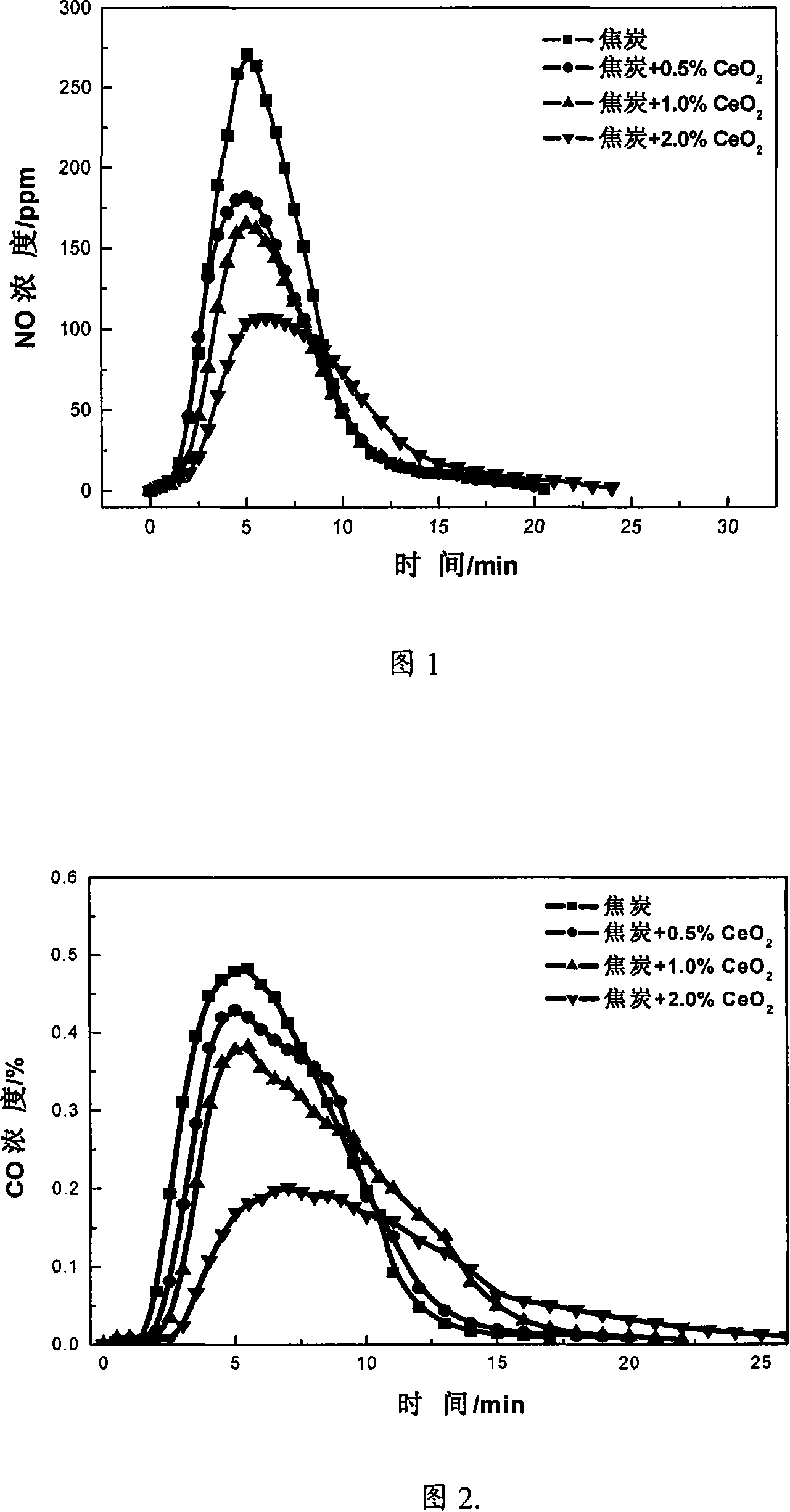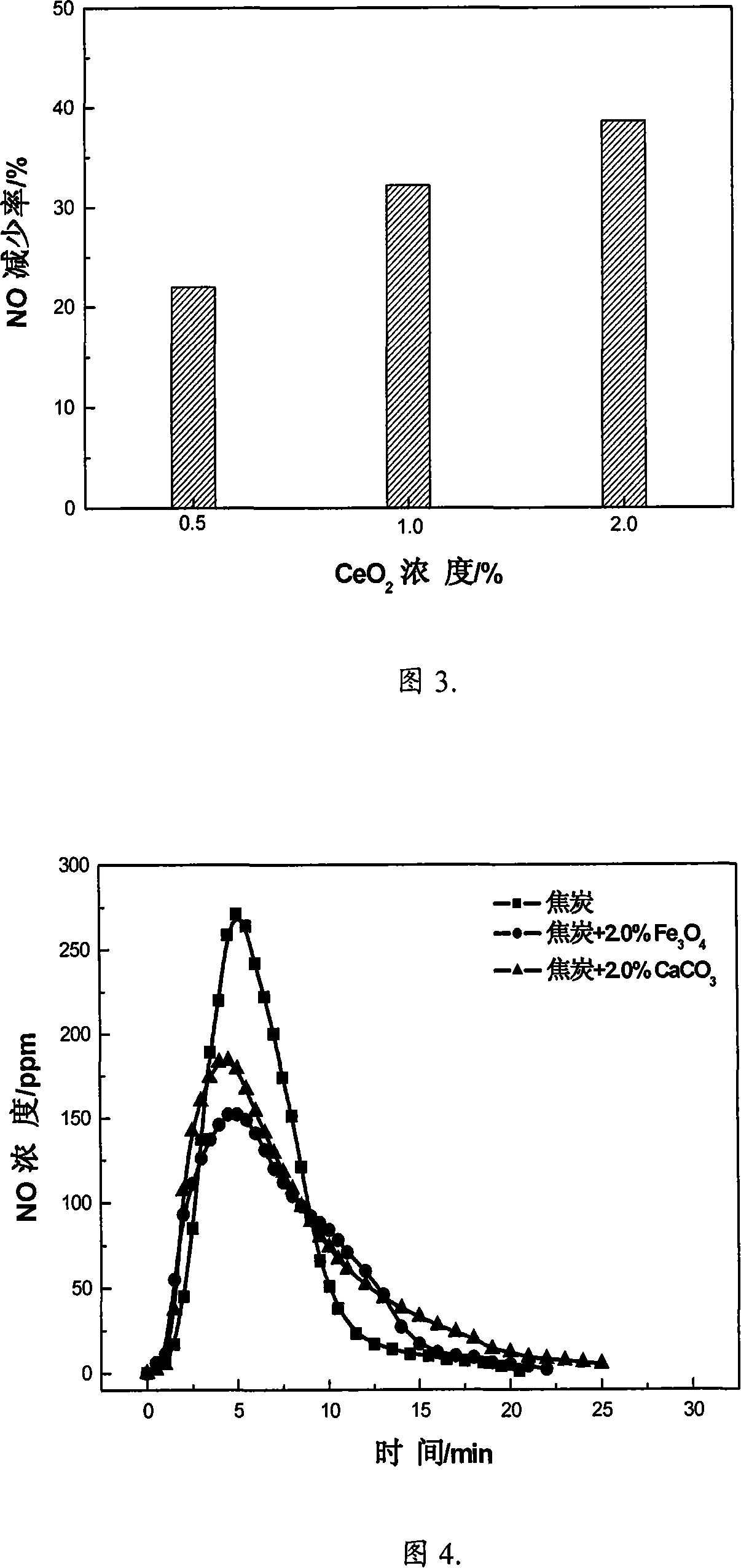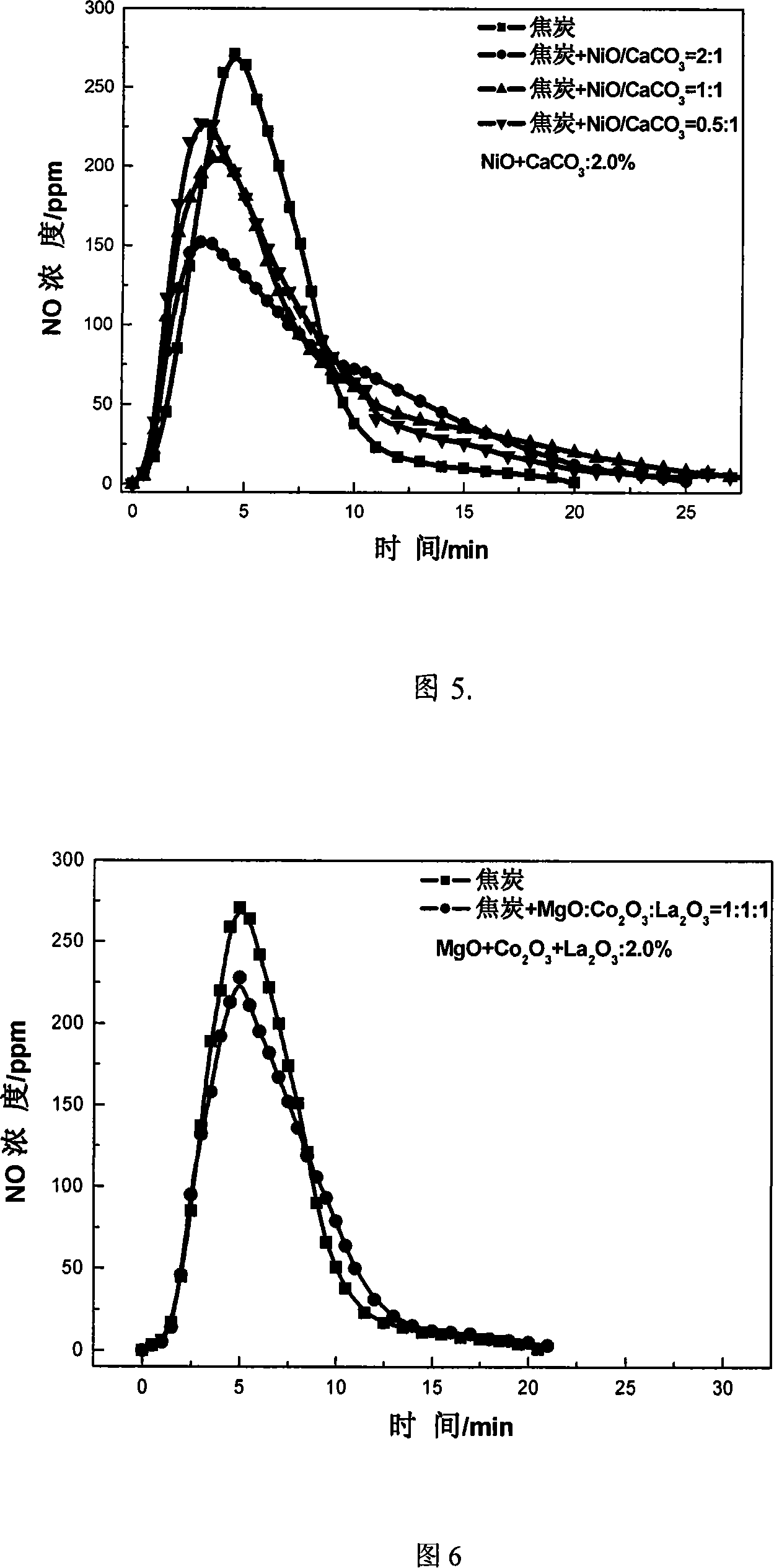Method for reducing NOx discharge in sintering process by using additive modified coke
A sintering process and additive technology, applied in the field of metallurgical environmental protection, can solve the problems of high investment cost and operating cost, large flue gas emission, difficult treatment, etc., so as to reduce the energy consumption of sintering, reduce the emission of CO, and improve the combustion efficiency. Effect
- Summary
- Abstract
- Description
- Claims
- Application Information
AI Technical Summary
Problems solved by technology
Method used
Image
Examples
Embodiment 1
[0030] 0.2g, 0.3g and 0.4g of CeO with a particle size of 20-30μm 2 Add to 20g water to make 1.0%, 1.5% and 2.0% CeO 2 Emulsion, under stirring at 30r / min, add 5g of coke particles with a particle size of 0.8-1.0mm respectively, remove the coke after 25 minutes, and dry at 60°C to obtain 5.026g, 5.051g and 5.102g of adsorption CeO 2 of coke. CeO 2 NO in the combustion process of modified coke before and after x The emission concentration is shown in Figure 1. The test parameters are: the coke mass is 1.0g, the air flow rate is 4.0L / min, and the initial combustion temperature is 900°C. by CeO 2 After modification, NO in the process of coke combustion can be reduced x emission concentration, and with the CeO in coke 2 content increase, NO x The emission concentration gradually decreased. The CO emission concentration during coke combustion before and after modification is shown in Fig. 2. by CeO 2 After modification, the emission concentration of CO during coke combus...
Embodiment 2
[0032] 0.4g CaCO with a particle size of 20-30μm 3 and Fe 3 o 4 Add to 20g water to make 2.0% CaCO 3 Emulsion and Fe 3 o 4 Add 5g of coke particles with a particle size of 0.8-1.0mm to the emulsion under stirring at a speed of 30r / min, remove the coke after 25 minutes, and dry at 60°C to obtain 5.102g of adsorbed CaCO 3 and Fe 3 o 4 of coke. CaCO 3 , Fe 3 o 4 NO in the combustion process of modified coke before and after x The emission concentration is shown in Figure 4, and the test parameters are: the coke mass is 1.0g, the air flow rate is 4.0L / min, and the initial combustion temperature is 900°C. Add 2.0% CaCO to coke 3 Can make NO in the process of coke combustion x The maximum emission concentration is reduced by about 30%, and 2.0% Fe is added to the coke 3 o 4 Can make NO in the process of coke combustion x The maximum emission concentration is reduced by about 50%.
Embodiment 3
[0034] 0.133g NiO and 0.267g CaCO 3 , 0.200g NiO and 0.200g CaCO 3 and 0.267g NiO and 0.133g CaCO 3 Add to 20g water to make 2.0% different NiO / CaCO 3 Ratio of emulsion, NiO and CaCO 3 The particle size of each particle is 20-30 μm. Under stirring at 30 r / min, 5 g of coke particles with a particle size of 0.8-1.0 mm are respectively added. After 25 minutes, the coke is taken out and dried at 60 ° C to obtain 5.102 g Adsorption of different NiO / CaCO 3 ratio of coke. Different NiO / CaCO 3 The proportion of the mixture modified coke before and after the combustion process of NO x The emission concentration is shown in Figure 5, and the test parameters are: the coke mass is 1.0g, the air flow rate is 4.0L / min, and the initial combustion temperature is 900°C. With NiO / CaCO 3 With the increase of the mass ratio, the NO in the combustion process of the modified coke x The emission concentration gradually decreased. When NiO / CaCO 3 When the mass ratio is 0.5:1, add 2.0% NiO ...
PUM
| Property | Measurement | Unit |
|---|---|---|
| Particle size | aaaaa | aaaaa |
| Particle size | aaaaa | aaaaa |
Abstract
Description
Claims
Application Information
 Login to View More
Login to View More - R&D
- Intellectual Property
- Life Sciences
- Materials
- Tech Scout
- Unparalleled Data Quality
- Higher Quality Content
- 60% Fewer Hallucinations
Browse by: Latest US Patents, China's latest patents, Technical Efficacy Thesaurus, Application Domain, Technology Topic, Popular Technical Reports.
© 2025 PatSnap. All rights reserved.Legal|Privacy policy|Modern Slavery Act Transparency Statement|Sitemap|About US| Contact US: help@patsnap.com



